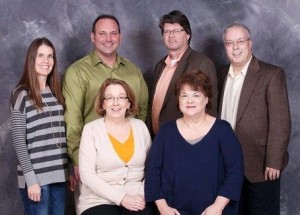Hockey supporters filled the school’s boardroom once again last Tuesday evening, hoping to rally support for a school district bond referendum that would include a second sheet of ice. Their hopes were dashed last month when the school board decided against moving forward with a tax abatement levy to build the additional sheet of ice.
Now they have turned their focus on what may be their last hope for getting a second sheet of ice built in the foreseeable future: a school district bond referendum that would include a second sheet of ice and other school district facility needs which have yet to be determined.
School board members voiced their unanimous support for pursuing the possibility of a bond referendum that would consider a broader range of safety and facility needs in addition to the expanded ice arena. This could include other sports facility needs, facility safety issues, roof repair issues or others.
The board decided a committee should be formed to research and identify what board chair Doug Birk called “significant safety and facility needs and concerns that they feel would warrant going in front of the voters at this time.”
 “We’re only going to look at proposals where there is a real, identifiable need,” board member Jeff Lindquist said. “If we get proposals to add things to a ballot measure simply to broaden the constituency or to appease one group or another, I’m not going to support that and I don’t think the board will as well. I just want to say that up front.”
“We’re only going to look at proposals where there is a real, identifiable need,” board member Jeff Lindquist said. “If we get proposals to add things to a ballot measure simply to broaden the constituency or to appease one group or another, I’m not going to support that and I don’t think the board will as well. I just want to say that up front.”
Though no certain numbers are known at this time, Birk suggested the bond amount might be in the $12 million-$20 million range. The benefit of securing funding through a voter approved school district bond is that the state’s bond equalization program would pay half or slightly more of that total bond; local taxpayers would fund the rest. In contrast, the tax abatement levy, had it been approved, would have placed 100 percent of the costs on local property taxes.
Superintendent Jim Behle said a design committee for the second sheet of ice is currently working on an up-to- date cost estimate for an arena expansion, and Lindquist said the committee has made some design decisions for the arena expansion that are scaled down and smaller than a previous drawing, but would still meet the needs of the high school and youth teams.
While the board put its collective support behind the referendum idea, they were quick to say that they retain the right to pull their support for the bond referendum if they feel the cost estimates are beyond what they consider reasonable.
The board also discussed a timeline for the potential bond referendum. The vote could either take place during the primary election in August, on Election Day itself in November or else sometime in January or early February.
The latter option would mean the district would have to fund the election themselves, to a tune of about $10,000. However, Birk said there are benefits to the later date that might make the cost worthwhile. One reason is so that the school board will have time to select the new superintendent and get him or her settled into the position before turning too much focus to the bond referendum. Superintendent selection is a lengthy and time consuming process, and the board has said that selecting a superintendent is the most important job they have as school board members.
Another reason for a later election is to give time for an open, informed discussion on the issue, without the noise of the presidential election or busyness of the holiday season. This later date would also give time, Lindquist said, for the arena design committee and bond referendum committee to get firm numbers and do their due diligence on determining other facility needs and those costs.
All of the board members felt August would be too soon, and Peyerl brought up that voters might be more apt to vote in November versus either of the other two dates. Birk expressed disdain for the cost of the winter election option, but as a whole the board felt that, with all factors considered, a later election would be best for the community, for the board and the new superintendent.
More decisions on a timeline will be made at the next board meeting, February 1.